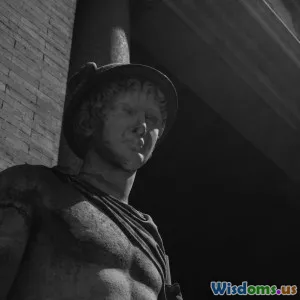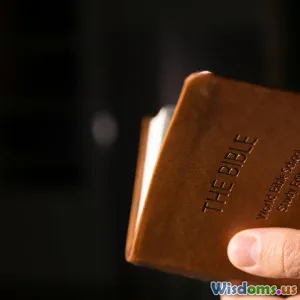
Why Do Trickster Gods Remain Popular in Modern Culture
8 min read Explore why trickster gods captivate modern culture, blending myth with pop narratives to reflect human complexity. (0 Reviews)
Why Do Trickster Gods Remain Popular in Modern Culture?
Introduction
Across cultures and centuries, trickster gods have enthralled storytellers, spiritual leaders, and everyday people alike. From Loki in Norse mythology to Anansi in West African tales, these characters have been emblematic of cunning, chaos, and change. But why do they persist in modern culture, often resurfacing in popular movies, literature, and even behavioral archetypes? In an age dominated by technology and fast-paced advancement, the enduring popularity of trickster gods taps into something primal yet surprisingly relevant.
This article delves into the multifaceted reasons that keep trickster gods not just alive, but thriving in contemporary narratives. We will examine their cultural versatility, embodiment of duality, role in catharsis, and the challenge they pose to authority—factors that make them compelling symbols for modern audiences.
The Archetypal Nature of the Trickster God
Origins and Universality
Trickster gods are nearly universal across cultures, suggesting a deeply ingrained archetype. Carl Jung identified the trickster as a powerful archetype, associated with transformation and boundary-crossing. These figures are often shape-shifters, rule-breakers, and boundary-pushers, embodying ambiguity and paradox.
For example, Loki in Norse myths is both a destroyer and a helper, often causing chaos but also helping the gods out of dire predicaments. Similarly, the Native American Coyote acts as a creator and fool. This dual role engages audiences by reflecting the complex nature of morality and human behavior.
Archetype in Modern Storytelling
Present-day narratives frequently tap into the trickster archetype. The Marvel Cinematic Universe’s Loki is a prime example, combining mischief, vulnerability, and anti-hero qualities that resonate widely. These characters offer audiences a glimpse of imperfection and rebellion against conformity, making them captivating and relatable.
Cultural Versatility and Adaptability
Transcending Time and Space
Trickster gods are remarkable in their adaptability to diverse contexts. Anansi, who originated from Ghanaian folklore, has been woven into Caribbean and American storytelling, adapting to the diaspora’s cultural settings. This versatility allows them to serve as tools to express cultural identity and resistance across generations.
Adaptation Into Modern Media
In modern culture, trickster figures are prevalent in movies, books, TV shows, and video games. For example, the character of the Joker in Batman comics and films is a quintessential trickster. While not a god per se, he carries the spirit of the archetype—challenging social order through chaos and unpredictability. This cultural reimagining caters to contemporary societal challenges and anxieties, especially questioning authority and moral absolutes.
Embodiment of Duality and Human Complexity
Reflection of Moral Ambiguity
Unlike simple heroes or villains, trickster gods embody shades of gray. They reflect the complexity of human nature—capable of both good and evil, kindness and cruelty, wisdom and folly. This complexity resonates in modern life, where moral absolutes are increasingly questioned.
Psychological Appeal
Psychologically, tricksters appeal because they personify the human shadow—the repressed, chaotic impulses within us. Engaging with trickster figures allows audiences to explore these aspects safely, addressing internal conflicts and embracing contradiction without judgment.
Trickster Gods as Agents of Change and Innovation
Mythological Importance of Transformation
Traditionally, trickster gods facilitate change by disrupting the status quo. Their antics often lead to new understandings or creations. For instance, Prometheus, who can be considered a trickster figure in Greek mythology, steals fire to gift humanity, symbolizing enlightenment and progress.
Modern Symbolism
In modern culture, trickster figures symbolize innovation and rebellion. Their energy aligns with societal shifts, pushing boundaries in art, technology, and social structures. Entrepreneurs and creative forces often embody trickster traits—embracing risk, thinking unconventionally, or disrupting markets.
The Role of Humor and Catharsis
Humor as a Coping Mechanism
Humor is a vital attribute of trickster gods. Through satire and parody, they invite laughter while issuing social critiques. The trickster’s humor provides catharsis, allowing people to confront uncomfortable truths indirectly.
Cultural Examples
Consider Br’er Rabbit from African-American folktales, who uses wit to outsmart opponents in a hostile environment, symbolizing resilience and hope. Today, memes and viral internet content often adopt a trickster stance, using humor to dissect current issues and facilitate social bonding.
Challenge to Authority and Social Norms
Questioning Power Structures
Trickster gods challenge established authority and accepted norms, making them symbolic rebels. Their stories highlight the arbitrary or flawed nature of laws and leadership, encouraging critical thinking.
Relevance to Modern Movements
Modern social and political movements often channel trickster energy in pushing for change. Activists employ satire and disruption tactics that echo trickster methods, emphasizing the ongoing relevance of this archetype.
Conclusion
The enduring popularity of trickster gods in modern culture is a testament to their multifaceted roles as symbols of complexity, humor, transformation, and rebellion. These figures endure because they speak directly to the contradictions and challenges inherent in human nature and society.
From ancient mythologies to blockbuster films and viral internet culture, trickster gods remain a source of fascination, reflection, and inspiration. They remind us that breaking the rules, embracing ambiguity, and laughing at life’s absurdities are intrinsic parts of the human experience.
Final Thought
As society continues to evolve, the trickster archetype will undoubtedly adapt and thrive, continually offering fresh perspectives and helping humanity navigate the ever-changing landscape of culture and identity.
References
- Jung, C. G. (1959). The Archetypes and The Collective Unconscious.
- Leeming, D. (2010). Trickster Tales: A Study of Their Importance in Myth.
- Marvel Studios. (2011- ). Thor and Loki film series.
- Asante, M. K. (2001). Anansi’s Journey: A Tale of Trickery and Wisdom.
Rate the Post
User Reviews
Popular Posts




















